Paul Murrell tests the 2019 Suzuki Jimny with pricing, specs, ride and handling, safety, verdict and everything the over-50 driver needs to know.
Summary: The Suzuki Jimny is cuter than a Disney cartoon character, and while it brings a smile to your face, make sure it suits your needs before buying.
2019 Suzuki Jimny
Pricing: From $23,990 (manual), $25,990 (auto), plus on road costs (incredible value for money)
Options: metallic paint (single colour) $500, dual-tone metallic paint and roof $1200
Warranty: Five-years, unlimited km
Capped price servicing: Five years
Roadside assist: Three years
Safety: Three-star ANCAP (that’s surprising considering the level of standard safety features)
Engine: 1.5-litre VVT 16-valve four-cylinder petrol
Power: 75kW at 6000rpm
Torque: 130Nm at 4000rpm
Transmission: Five-speed manual, four-speed auto
Drive: part time all-wheel drive
Body: 3480mm (long, 3645mm including spare wheel); 1645mm (wide); 1720mm (high)
Boot capacity: 85 litres (seatbacks up), 377 litres (seatbacks folded) (most people will leave the rear seats permanently folded)
Weight: 1075kg (manual), 1090kg (auto)
Turning circle: 4.9m
Towing: not stated
Wheels: 15-inch alloy
Tyres: 195/80 R15 Bridgestone Desert Dueler H/T (yes, we’d use two Ls, but that’s how Bridgestone labels them)
Spare: Full size alloy (other manufacturers of off-road vehicles should follow suit)
Fuel Tank: 40 litres
Thirst: 6.4L/100km (manual, combined, 91 RON unleaded), 6.9L/100km (auto, combined, 91 RON unleaded)
[review]
BUYERS OF THE NEW SUZUKI Jimny are already lining up, and thanks to strong worldwide demand there will only be 1100-odd coming to Australia in 2019 (the Kosai factory will build just 60,000 vehicles a year, and Suzuki already holds orders for the next one-and-a-half years in Japan).
Most of those who have put their names down on the waiting list know what to expect, and clearly, practical considerations are not a high priority. No doubt, a high percentage have already been seduced by the cheeky retro design that calls on plenty of design cues from the three generations that came before.
That said, the Jimny has the chops to go far off-road and thanks to its 210mm ground clearance and compact dimensions, it will take you places that will leave larger 4WDs floundering or beached. That should wipe a few smiles off the faces of sanctimonious, patronising “serious” off-roaders!

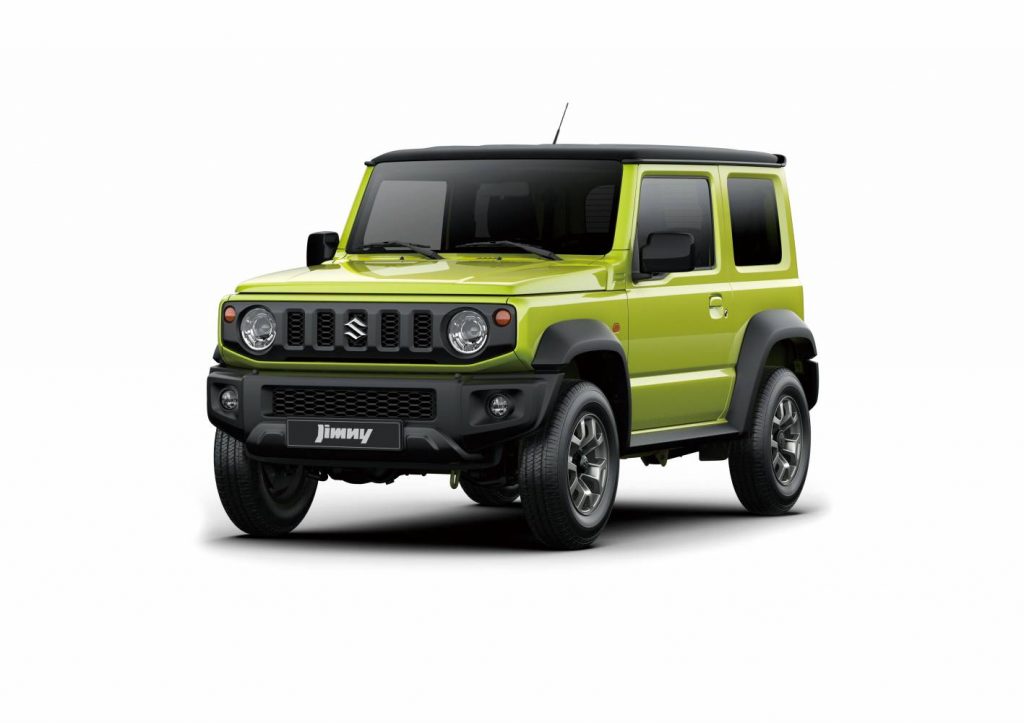
Definitely not a “crossover”.
It may be compact, and nauseatingly cute, but the Jimny’s off-road credentials are impeccable. All models get a low-range transfer box with 2WD high range, 4WD high range and 4WD low range. Moving between 2H and 4H can be carried out at up to 100km/h while switching from 4H to 4L needs to be done at a complete standstill. The chassis is the tried and true ladder frame fitted with three-link rigid axles. Hill descent control is standard and operates at 10km/h in high range and 5 km/h in low range, or slower if you start off at a lower speed.
At the launch in Werribee, Victoria, we took the diminutive Jimny up and down slopes of more than 30 degrees – if you don’t think that’s steep, try walking it! We climbed over humps and went down slopes that made us feel we would stand the little Suzuki on its nose, and it coped with them all (although I did have to make a second attempt at one slippery uphill slope – but this was more my shortcomings as an off-roader than any fault of the Jimny).
While the Jimny is a fully-fledged off-roader, we’re not so sure about its on-road skills, especially at highway speeds. We didn’t get a chance to test the Jimny on the open road, so we’re making some assumptions, but such a short wheelbase (2250mm), narrow track (1395mm front and 1405mm rear) and rugged but unsophisticated suspension don’t bode well for long distance cruising. And if that’s high on your list, you’re looking at the wrong car.
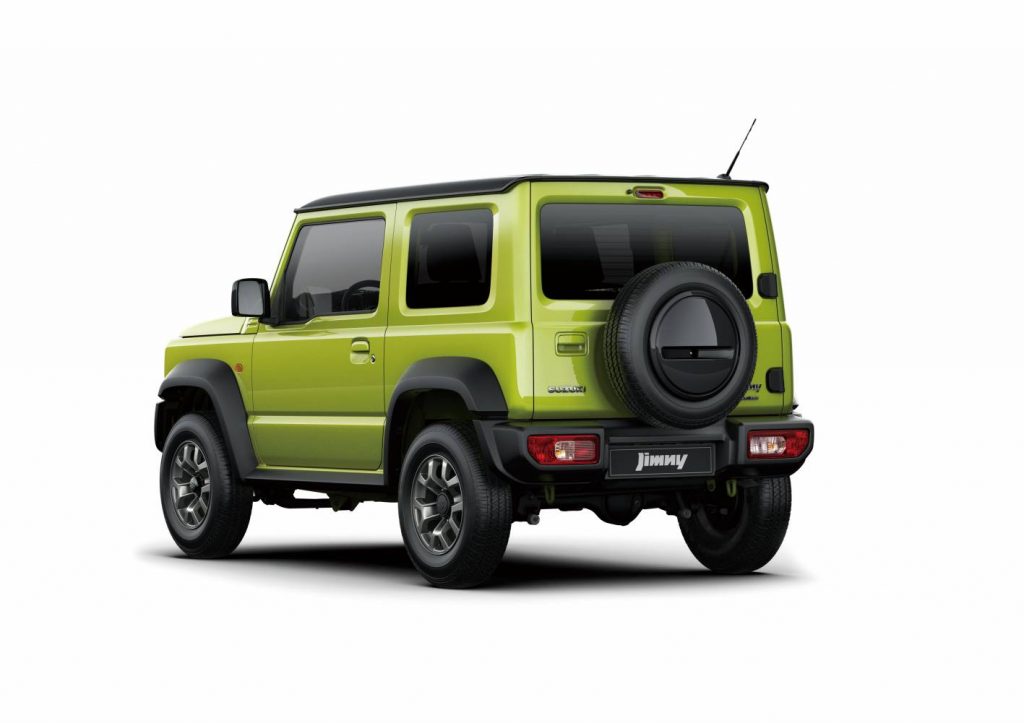
One of a kind.
One of the reasons for the incredible popularity of the Suzuki Jimny is that there simply isn’t a competitor that comes close in terms of size, ability and price. That puts Suzuki dealers in a strong position with the car going on sale on Australia Day.
And because it is “pat me on the bonnet” cute, it’s not just the die-hard off-roaders lining up – young women just love it. For the over-50s, there’s the obvious appeal of a high seating position and its size makes it easy to park and manoeuvre.
Trying to put it in a category isn’t easy – simply put, small SUVs can’t compete with the Jimny’s off-road ability; larger SUVs that may come close in ability can’t match the sharp price that kicks off at just $23,990 (plus on road costs).
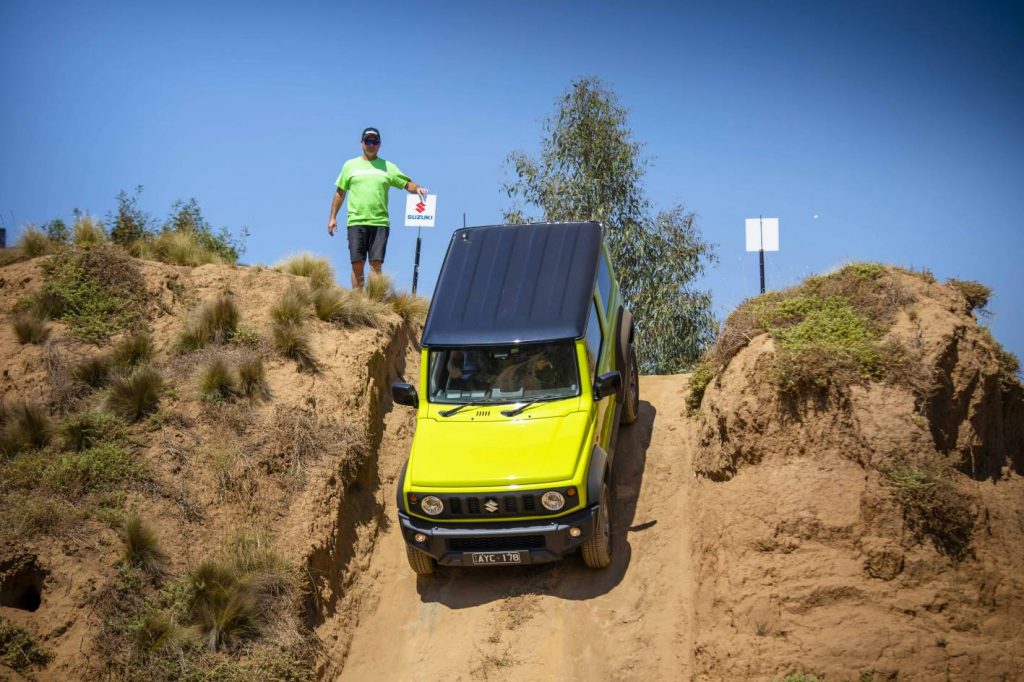
Just how small is it?
Photographed in isolation, the Jimny could be almost any size. But see it in the flesh and you realise just how compact it is – smaller than many compact hatchbacks, and 30mm shorter than the little Jimny it replaces (all down to slimmer bumpers) although width has gone up by 45mm and height by 20mm.
It follows standard off-roader design precepts with a simple two-box design, large (well, by the standards of the car, at least) side-hinged rear door, five-slot grille. Plastic front and rear bumpers and wheel-arch mouldings and happy little round headlights, all set off by stylish 15-inch dark metallic alloy wheels (including the rear-mounted spare).
Thanks to the compact dimensions and bumpers being angled to avoid obstacles, the Jimny has an impressive approach angle of 37 degrees, ramp breakover angle of 28 degrees and departure angle of 49 degrees.
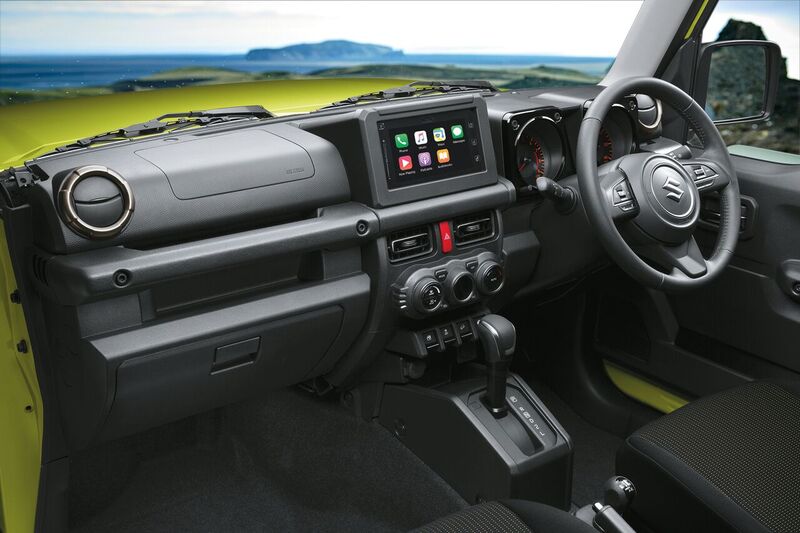
More standard equipment.
Despite its headlining entry price, the Jimny is surprisingly well equipped with a reasonably-sized (seven-inch) infotainment touch screen, satellite navigation, climate control, Bluetooth, Android Auto and Apple CarPlay, LED headlights, front foglights, rear privacy glass and body-coloured door handles, as well as a single USB charging port and cruise control.
Suzuki describes the interior as “humble yet handsome”. There are pseudo military touches (such as the instrument pods with exposed screw heads) and plenty of grab handles. Sure, it’s a bit squeezy for two large blokes, and don’t even think about spending too much time slotted into the rear seats, but all in all, there’s a feel-good vibe about the interior and excellent vision in most directions. Apparently, the switches can even be operated by someone wearing gloves, and the steering wheel only gets up and down adjustment, but not for reach.
There’s not much bolstering on the front seats, so you tend to slip and slide a bit on the rough stuff, and the rear seats are even flatter and less supportive. Front seats have gained 70mm in width, but they still feel a bit tight. With 240mm of fore and aft movement, even reasonably tall drivers can be accommodated (although this makes the rear even more impractical) and the front seats can be folded fully flat – something of a rarity these days – and you’ll have to live with the height because there’s no height adjustment.
Luggage space is, to be kind, on the tight side, although with the seats fully folded, there’s 377 litres available (53 litres more than before). With the seats up, luggage space is a paltry 85 litres.
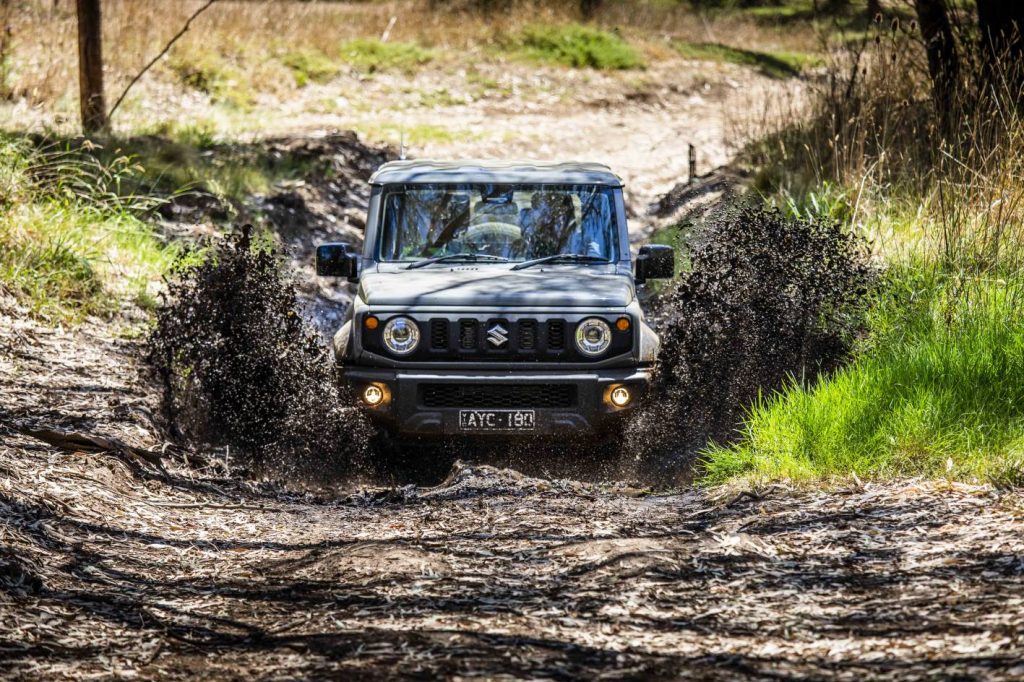
Mechanically upgraded.
Suzuki has stood by the old mantra of “if it ain’t broke, don’t fix it”. The chassis is a ladder frame with additional cross-bracing for a 150 percent improvement in torsional rigidity. Three-link live axles front and rear give the little Suzuki amazing off-road articulation – sitting behind one, you can see all those suspension bits moving around. Steering is by recirculating ball and a drop link – hardly state of the art, but more than capable (since we haven’t had a chance to drive the Jimny on-road, we’ll reserve judgement on that part of its abilities). The Jimny makes do without locking differentials, instead making use of the stability control system to brake diagonally-opposed spinning wheels. We cocked a wheel a number of times, and while the response isn’t exactly instantaneous, we were able to carry on through the rough stuff.
The engine is Suzuki’s tried and tested 1.5-litre naturally aspirated petrol unit, driving all four wheels through a five-speed manual or four-speed auto. Again, both worked well in our off-road drive, but we’ll wait to see how they perform on the road. With a 1.5-litre engine replacing the previous 1.3-litre unit, power and torque are both up on the previous model – 12.5kW and 20Nm respectively – but we doubt the Jimny has been turned into a pocket rocket.
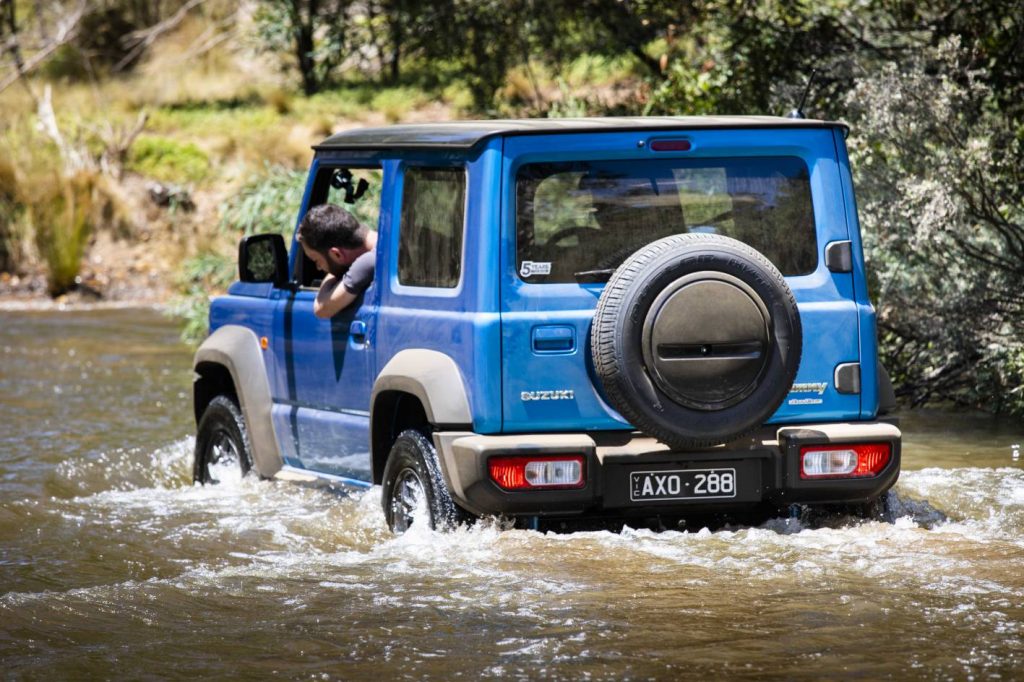
ANCAP safety rating is a disappointment.
With hill hold control, hill descent control, autonomous emergency braking, emergency stop signal, ESC, lane departure warning, weaving alert, high beam assist, six airbags and pedestrian injury mitigation body, Suzuki must have been hoping for a good ANCAP testing result, and they are probably slightly (and justifiably) disappointed at the three-star rating they achieved.
ANCAP suggested the Jimny fell short of expected safety standards in three of the four areas of assessment. ANCAP’s James Goodwin pointed out structural and design weaknesses, poor protection of pedestrians and cyclists and a lack of effective safety aids. ANCAP reported “a number of issues” with the frontal offset test, insufficient inflation of the driver’s airbag, lack of cyclist detection in the AEB and no night time functionality, plus poor performance in the avoidance of pedestrians and the unavailability of lane keep assistance.
On the other hand, the Jimny scored highly for child occupant protection, thanks to its ability to accommodate a range of child restraints in the two rear seats and provide good levels of protection to children in frontal and side crash scenarios.
When questioned about this ANCAP result, Michael Pachota, Suzuki Australia’s GM Automotive, suggested that it would have little effect on sales. Judging from the way buyers ignored the poor ANCAP rating for the Ford Mustang when it arrived in Australia, we suspect he’s right.
The result highlights the difficulty some manufacturers have with the ANCAP testing system, especially as it applies to economy vehicles. Hyundai has already commented that they may abandon ANCAP due to the high cost of achieving five-star ratings for entry-level models. See our report at http://www.seniordriveraus.com/more-cars-score-5-star-ancap-ratings-but-do-we-need-an-independent-body/
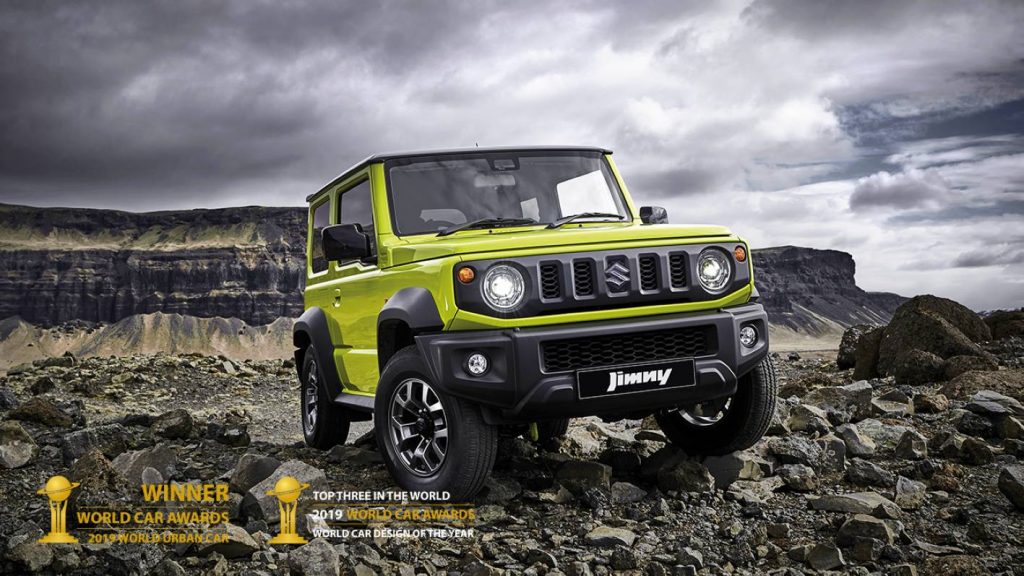
Warranty and service costs.
Suzuki’s move to a five-year warranty (unlimited kilometres) is welcome.
So too is capped price servicing for five years, although we take issue with the suggestion that the warranty will only apply if the vehicle is serviced at an authorised Suzuki dealer. Suzuki is not the only company who recommends dealer servicing, with the implicit threat that this is the only way to ensure the warranty stays valid.
The ACCC has made it clear that having your vehicle serviced other than at an authorised dealership will not void your warranty, so long as the recommended servicing (by qualified staff, according to the manufacturer’s specification and using appropriate quality parts) is carried out.
That said, Suzuki servicing is comparatively inexpensive, so it may be easier just to go along with the recommendation and have it serviced at a Suzuki dealership. The other benefit is that dealer servicing ensures that any recalls or dealer advisories are followed – not something that can be guaranteed with external servicing.
Summary.
The Suzuki Jimny is hugely appealing, brings a smile to your face even before you drive away and offers remarkably good value. It will appeal to cash-strapped off-road enthusiasts as well as buyers who simply want a bit of fun in their motoring. But to use it everyday around town requires some compromises. And not taking it off road is to ignore just how capable it is.
